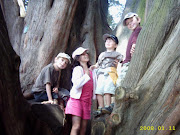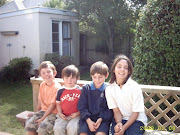

The photo to the left shows Highway 50. This was taken around the Sand Mountain area and shows the alkali flats in that area. The photo on the right is of the road through La Plata itself. The first few miles of the gravel road, as it leaves Highway 50, is in good condition, as it is maintained by Fallon Air Station and they grade it 4 - 5 times a year. Further on into the hills, the road gets rather rougher, as that part is maintained by the County and they only grade it once a year. It looked as though it had just been done.


These stone ruins are the first thing you see as you enter La Plata. A plaque in front says that this may be the remains of the courthouse. However, I found articles online, that suggested that this is the remains of a silver mill that was built at the entrance to the town.

One of the old mine shafts that dot the hill side. This one was about a hundred yards from the above ruins, so it might add credence to the theory that they were the remains of the silver mill. You can still see the ladder that goes down into the tunnel. All this was dug out with pick and shovel and presumably a few sticks of dynamite. None of the equipment that the modern day miner has!
Walking up along the road,you can see the remains of little stone cabins, that the miners built for themselves. La Plata was built in a narrow gully and it looks as though the rocks for these cabins were hewn out of the gully walls.Other rocks were possibly from the rubble that came from digging out the mine shafts.





The cabin in the middle photo, was very upscale! That large hole in the back wall is a fireplace, complete with a stone lintel above it. Most of the other cabins just had the remains of fire pits, that were situated in the middle of the room. The cabin in the lower right photo had been hollowed out of the hillside.
Wandering around the site, I was struck by the sense of history that this place held. My modern day mind can only begin to imagine the privations that these men and women must have undergone. All of what they would have needed, had to be bought in by bullock/horse/mule drawn wagons or carried in. The weather was harsh in those days, with hot, dry summers and cold, snowy winters. With the high snowfall that they had then, the road in would have been impassable for a good few months of the year. If they were injured, or became ill, it was days, if not weeks, to the nearest medical help. It was heavy, labour intensive, dangerous work and a harsh life. Made me feel like a real wimp!!
Found some squarehead nails, that were common in that era. Also came across some cans that would have held food. They were sealed with lead at the seams, so I can imagine that the lead levels in the miner's blood, was fairly high in those days!!


I my defense, my *wimpiness* factor is undergoing a change. To gt the photo on the left, which is a view down the valley towards the mountains, I had to make the climb portrayed by the photo on the right. I kept up a steady pace all the way up, without having to stop and rest. By the time I got to the top, I was a little out of breath, but still able to talk. That's quite a change from where I was at, 9 weeks ago, when I first started my journey towards being a fitter, healthier me. It felt very good and a real sense of achievement. :-)
All in all, a wonderful day :-)
Cheers.









1 comment:
Very interesting. I just love history. I love visiting a spot when I know the history, imagining what it must have been like. I get a thrill knowing that I'm standing in the same place they stood tens, hundreds or even thousands of years ago. I'm just kind of weird that way.
Post a Comment